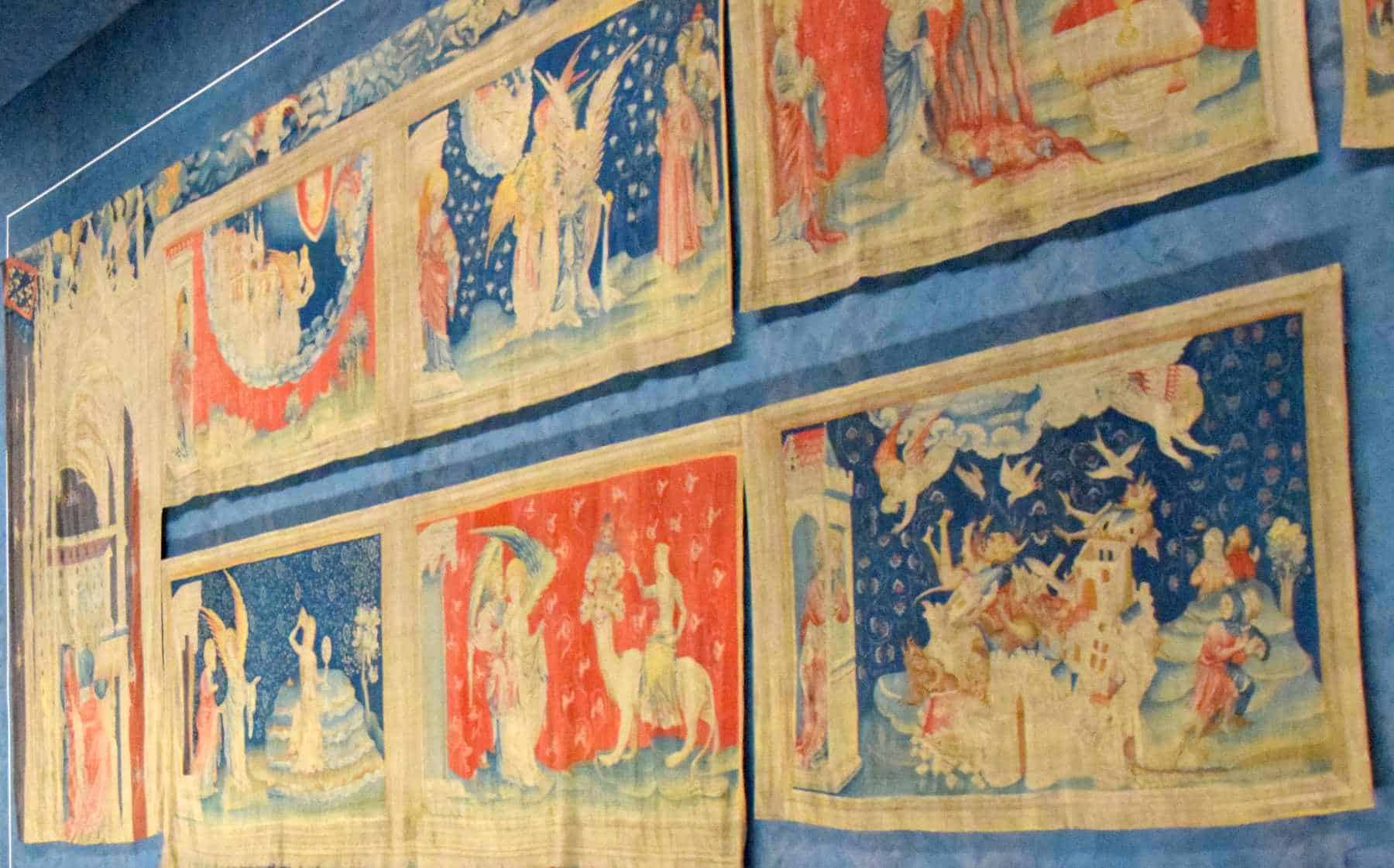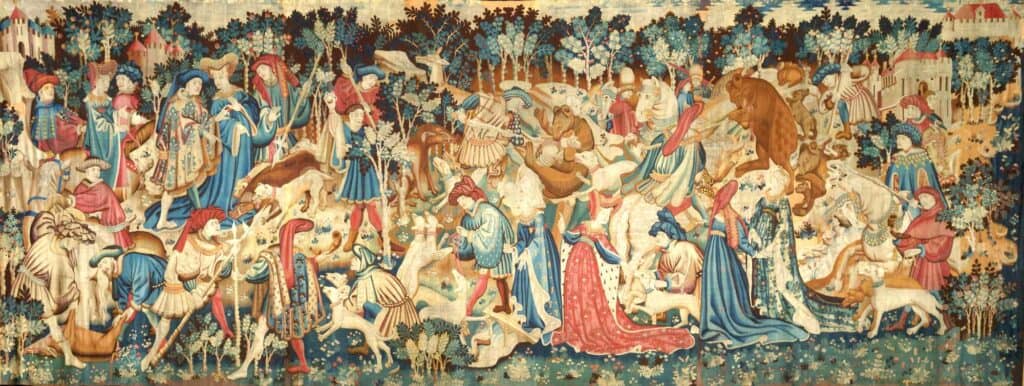
Recently at Harmonic, we’ve been thinking about how we can reshape some of the techniques we use for service design to better handle the complexity our clients are facing, specifically in the realm of highly dynamic, multi-actor systems. In other words, how can we—both design practitioners and product and service providers—be better at understanding concepts and perspectives for going beyond traditional customer-centricity?
To do this, we’ve taken a pretty big step back. We are reexamining our methods and techniques, the outcomes they produce, and recasting them to address broader audiences and more complexity. We recently had the opportunity to field-test some of our ideas with the service design community at SDGC20 that has helped us further shape our thinking. We now look at our methods as tools to help us weave an Experience Tapestry.
A lot of what we do in design is based on the idea of storytelling. That is we collect and analyze current stories and based on them, then create new stories or new narratives of a desired future state. A good measure of a successful design is how effectively you get people to agree to and go along with specific story narratives. Traditionally, we craft these story narratives for a single primary actor with a host of supporting cast. In most cases, the primary actor is the customer and the supporting cast is made up of people from different functions within the organization — salesperson, customer support agent, etc. The supporting cast do have their own stories; however, we rarely get to focus on them at any depth unless the work is specifically about them.
The challenge with focusing on a single actor as the primary is that it neglects the experience of the rest of the cast. Some might say this is acceptable if the work is meant to focus on a specific actor. But, the reality is each of these actors’ stories is the basis for a shared experience. This set of shared experiences is what defines, for all involved, the value of the service they are using or supporting.
Here is where the idea of an Experience Tapestry comes in. Just like a real tapestry is a visual narrative constructed from many threads, both metaphorical (many stories) and literal (wool or cotton), Experience Tapestry is composed of many individual actor stories (threads) woven into the larger story of the service.

If you think about a service, a business, or a problem space, the reality is they are all full of people whose lives are playing out in each of those contexts. These are their stories. Each of their stories intersects with each other’s stories in many different ways in many different moments. Sometimes they are sharing a moment. Sometimes they are impacting one another in those moments. An Experience Tapestry is a dynamic service ecosystem of interweaving stories in which many actors seek and create value moment by moment over time. At Harmonic, we are interested in identifying and unpacking these individual actor stories to build better ones.
As Service Designers, we work with lots of different people across an organization. We orchestrate the cultivation of different types of information, facilitating conversations and understanding different perspectives, harmonizing those into a cohesive thing—often in the form of a vision for a service or a service blueprint. This connecting of the dots is an invaluable activity in organizations enabling them to design for maximum value creation through their services in a complex and ever-changing world.
To do this, we are fortunate enough to work with extraordinary clients who are willing to explore new territory and embrace opportunities for experimentation. With them, we are constantly reshaping our techniques and building an Experience Tapestry Toolbox. At the core of this work, we have four principles that inform our emerging perspective:
Over the last 20 years, there has been a big push to be more customer-centric and consider the user or customer experience. In practice, even to this day, the model is to focus on the relationship between the customer to the business. The reality is there are many more actors. We are trying to get people to understand that we aren’t just dealing with customer-centricity but rather poly-centricity. Meaning there are many centers we should be considering in the design of a service.
Every person in an ecosystem creates value and should also receive value in exchange. We are developing methods to uncover and understand these different perspectives and the complex relationship dynamics between all actors. We believe this isn’t just a “nice to have,” but rather actually how you create better services and experiences and push innovation.
Because…
The Customer and Business dyad and generic customer-centric thinking do not reflect the dynamic systems of value creation
Service Designers Must…
Lean harder into ecosystems and actor-to-actor mindsets, concepts, and methods.
Help organizations embrace–not oversimplify–the complexity of the world around us to create better outcomes.
As service designers, we are thinking a lot about Service-Dominant (S-D) Logic and how to bring that way of thinking to our clients. S-D Logic focuses on the idea of co-creation of value between all parties in the exchange—organization, employee, and customer. We try to help organizations break from a Goods-Dominant mindset of “creating something and shipping it” where all the value is embedded in the created object itself and the singular moment of the launch. Instead, we help them think about ecosystems and their interconnected relationships—to think about all the potential value that can be created through all those interactions. Building on the polycentrism principle, we think about all the needs of all the people in an ecosystem and how we can begin to harmonize outcomes for everyone.
Yes, there are a lot of moving parts, but we should embrace that complexity rather than shy away from it. It is possible to design for that complexity, and service design has a toolkit to do that.
Because…
Value is co-created through collective experience and a complex web of relationships
Service Designers must…
Codify how each actor experiences the service and defines value from their perspective.
Design adaptive services to respond to changing definitions of value and produce desirable outcomes for all actors.
Moments are where value is co-created.
When designing a service, we do a lot of journey mapping, service blueprinting, ecosystem mapping, and many others. Looking across these, we’ve noticed a conceptual level of granularity, moments, that serve as a very good connector and mechanism for organizations to think about designing holistic experiences.
For example, you can break down a journey and think about the individual moments within it. At this level of specificity, it is easy to identify each of the actors who play a role in and experience that moment. Furthermore, each actor has unique functional, emotional, and social needs during that moment. And, most importantly, they also have identifiable desired outcomes that dictate the overall experiential success of the given moment. We usually bundle all this up in a tidy, easy to use Moment Brief.
Within a moment, when actors interact with one another is when value is co-created.
Unfortunately, in a lot of organizations, actors are often addressed as separate projects, e.g., one functional group might be looking at the customer experience, while another group is focused on employee experience. In a best-case scenario, one of these groups might have the chance to consider the experience of other (supporting cast) actors as they come in and out of contact with their primary actor. We are pushing organizations to look at all actors all the time because they all share one problem space. Moments are a way to break down this problem space into chunks that make understanding the complex dynamics manageable.
Because…
Experience is integral to (not an output of) value co-creation
Service Designers Must…
Develop better models for defining multi-actor experience dynamics.
Use moments as an evergreen building block to ensure the needs and desired experiences of people and inform and inspire service strategy, design, and delivery.
Once you understand the moments within people’s work or their experience of an organization’s services, you can begin to connect the dots among policies, processes, platforms, touchpoints, and channels. The moments people experience become the connective tissue to your business strategy and organizational capabilities, with the bonus of having people’s needs embedded within them. As a practice, we’ve been working on figuring out how to get human needs to be part of the operating system of an organization. We are finding moments are a great way to do this.
Because…
Service organizations must manage fit among strategies, activities, and capabilities with value expectations
Service Designers Must…
Connect the dots across journeys, services, and actors… and internal silos and capabilities. Use moments to construct a human-centered architecture that helps ensure more predictable value co-creation.
As mentioned previously, all of this thinking is starting to coalesce in an Experience Tapestry Toolbox. One filled with familiar techniques but with slight modifications that refocus them to either help identify and understand moments or to shape and redefine them. We hope to publish a series of articles that explore our thinking on how these techniques can help us understand the complex diversity of multi-actor ecosystems and how to design comprehensive services for them. Below is a list of the preliminary toolbox.